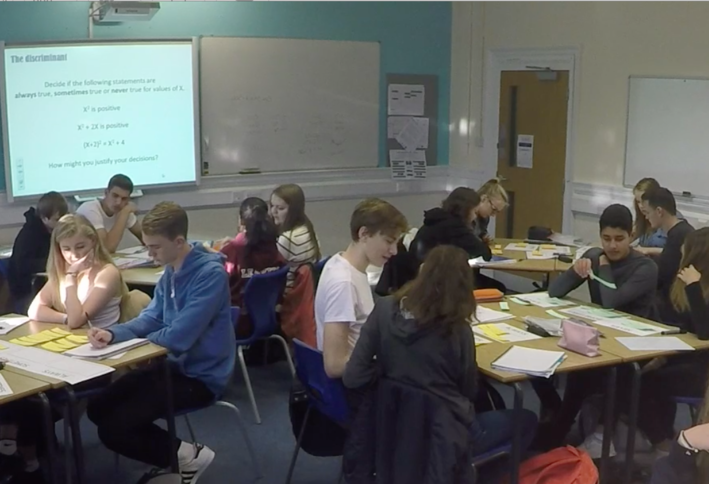These notes are intended to be read in conjunction with the resource files for the main task, Discriminating, including the teacher notes and solution.
Resource outline
Discriminating consists of several statements about the number of solutions of a quadratic equation. Students are asked to decide whether MUST, MAY or CAN’T is the correct choice of word within the statement. The statements are available as cards to be cut up and sorted according to which word should be used. Some cards may be simpler when tackled with an algebraic approach, whereas others may be more suited to a graphical approach.
Discriminating can be used to consolidate understanding of the discriminant and make connections between graphs and algebra. Students are required to justify their arguments by giving proofs or examples as appropriate. There’s the potential for some quite subtle thinking here.
Introducing the task and suggested ways of working
If possible, provide mini-whiteboards to help encourage graph sketching.

Allow individual thinking time at the start of the activity for students to think about one or two cards. To help process the statements on the cards, students could think of examples that satisfy the first part of the statement (not cards 6, 8, or 11) and then think about which is the correct word for the special case of their examples. Note that students will need to recognize the distinction between these examples and the general results.
In pairs, students should sort the cards into ‘MUST’, ‘MAY’, ‘CAN’T’ and ‘Unsure’ piles, and record their reasoning. Pairs could then compare and contrast solutions and approaches.
After several cards have been sorted, ask students to write down their argument for at least one card in each of the MUST, MAY and CAN’T piles, or present their arguments to each other. How can they use sketches to support their arguments? They should think about what makes a convincing argument – a general proof or specific example. The interactive graph in the resource could be used to support discussion.
As an alternative the statements could be used as a sequence of problems over a series of lessons.
Prerequisites
The discriminant, manipulating inequalities, sketching quadratics.
Skills involved in this task
Calculating the discriminant, relating roots of a quadratic to the coefficients in the equation, completing the square, manipulating inequalities, sketching curves, graph transformations, reasoning and deduction, proving results, generating examples.

